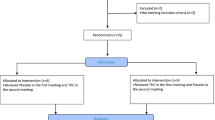Abstract
We previously reported that vanilloid receptor type 1 (VR1, or TRPV1) was up-regulated in dorsal root ganglion (DRG) and the spinal dorsal horn after chronic inflammatory pain produced by complete Freund’s adjuvant (CFA) injection into the plantar of rat hind paw. In the present study, we found that subcutaneous or intrathecal application of capsazepine (CPZ), a TRPV1 competitive antagonist, could inhibit thermal hyperalgesia on day 1 and on day 14 but not on day 28 after CFA injection. With extracellular electrophysiological recording, the effect of CPZ on noxious electrical or heat stimulation evoked responses of wide dynamic range (WDR) neurons in the deep layers of the spinal dorsal horn was evaluated. Under noxious electrical stimulation to sciatic nerve, CPZ applied to the spinal cord produced an inhibition on Aδ- and C-fiber evoked responses of WDR neurons on day 1 and 14, but not on day 28. Under radiant heat stimulation to the receptive field skin, subcutaneous application of CPZ significantly inhibited the background activity and extended the response latency of WDR neurons on day 14. These results provide new evidence for the functional significance of TRPV1 at the early stage, but not the late stage, in the rat model of CFA-induced inflammatory pain.





Similar content being viewed by others
References
Caterina MJ, Schumacher MA, Tominaga M, Rosen TA, Levine JD, Julius D (1997) The capsaicin receptor: a heat-activated ion channel in the pain pathway. Nature 389:816–824
Guo A, Vulchanova L, Wang J, Li X, Elde R (1999) Immunocytochemical localization of the vanilloid receptor 1 (VR1): relationship to neuropeptides, the P2X3 purinoceptor and IB4 binding sites. Eur J Neurosci 11:946–958
Valtschanoff JG, Rustioni A, Guo A, Hwang SJ (2001) Vanilloid receptor VR1 is both presynaptic and postsynaptic in the superficial laminae of the rat dorsal horn. J Comp Neurol 436:225–235
Hayes P, Meadows HJ, Gunthorpe MJ, Harries MH, Duckworth DM, Cairns W, Harrison DC, Clarke CE, Ellington K, Prinjha RK, Barton AJ, Medhurst AD, Smith GD, Topp S, Murdock P, Sanger GJ, Terrett J, Jenkins O, Benham CD, Randall AD, Gloger IS, Davis JB (2000) Cloning and functional expression of a human orthologue of rat vanilloid receptor-1. Pain 88:205–215
Farquhar-Smith WP, Egertova M, Bradbury EJ, McMahon SB, Rice AS, Elphick MR (2000) Cannabinoid CB(1) receptor expression in rat spinal cord. Mol Cell Neurosci 15:510–521
Hwang SJ, Valtschanoff JG (2003) Vanilloid receptor VR1-positive afferents are distributed differently at different levels of the rat lumbar spinal cord. Neurosci Lett 349:41–44
Kelly S, Chapman V (2002) Spinal administration of capsazepine inhibits noxious evoked responses of dorsal horn neurons in non-inflamed and carrageenan inflamed rats. Brain Res 935:103–108
Kelly S, Chapman V (2002) Effects of peripheral nerve injury on functional spinal VR1 receptors. NeuroReport 13:1147–1150
Ohkubo T, Shibata M, Takahashi H (1993) The analgesia induced by intrathecal injection of ruthenium red. Pain 54:219–221
Tohda C, Sasaki M, Konemura T, Sasamura T, Itoh M, Kuraishi Y (2001) Axonal transport of VR1 capsaicin receptor mRNA in primary afferents and its participation in inflammation-induced increase in capsaicin sensitivity. J Neurochem 76:1628–1635
Davis JB, Gray J, Gunthorpe MJ, Hatcher JP, Davey PT, Overend P, Harries MH, Latcham J, Clapham C, Atkinson K, Hughes SA, Rance K, Grau E, Harper AJ, Pugh PL, Rogers DC, Bingham S, Randall A, Sheardown SA (2000) Vanilloid receptor-1 is essential for inflammatory thermal hyperalgesia. Nature 405:183–187
Caterina MJ, Leffler A, Malmberg AB, Martin WJ, Trafton J, Petersen-Zeitz KR, Koltzenburg M, Basbaum AI, Julius D (2000) Impaired nociception and pain sensation in mice lacking the capsaicin receptor. Science 288:306–313
Luo H, Cheng J, Han JS, Wan Y (2004) Change of vanilloid receptor 1 expression in dorsal root ganglion and spinal dorsal horn during inflammatory nociception induced by complete Freund’s adjuvant in rats. NeuroReport 15:655–658
Bevan S, Hothi S, Hughes G, James IF, Rang HP, Shah K, Walpole CS, Yeats JC (1992) Capsazepine: a competitive antagonist of the sensory neurone excitant capsaicin. Br J Pharmacol 107:544–552
Jerman JC, Brough SJ, Prinjha R, Harries MH, Davis JB, Smart D (2000) Characterization using FLIPR of rat vanilloid receptor (rVR1) pharmacology. Br J Pharmacol 130:916–922
Maggi CA, Bevan S, Walpole CS, Rang HP, Giuliani S (1993) A comparison of capsazepine and ruthenium red as capsaicin antagonists in the rat isolated urinary bladder and vas deferens. Br J Pharmacol 108:801–805
Storkson RV, Kjorsvik A, Tjolsen A, Hole K (1996) Lumbar catheterization of the spinal subarachnoid space in the rat. J Neurosci Methods 65:167–172
Wan Y, Wilson SG, Han J, Mogil JS (2001) The effect of genotype on sensitivity to electroacupuncture analgesia. Pain 91:5–13
Merrill EG, Ainsworth A (1972) Glass-coated platinum-plated tungsten microelectrodes. Med Biol Eng 10:662–672
Dickenson AH, Sullivan AF (1990) Differential effects of excitatory amino acid antagonists on dorsal horn nociceptive neurones in the rat. Brain Res 506:31–39
Dickenson AH, Dray A (1991) Selective antagonism of capsaicin by capsazepine: evidence for a spinal receptor site in capsaicin-induced antinociception. Br J Pharmacol 104:1045–1049
Doly S, Fischer J, Salio C, Conrath M (2004) The vanilloid receptor-1 is expressed in rat spinal dorsal horn astrocytes. Neurosci Lett 357:123–126
Acknowledgements
This work was supported by the grants from National Natural Science Foundation of China (30600173, 30570566 and 30470559), “111” Project of the Ministry of Education of China, “973” program of the Ministry of Science and Technology of China (2007CB512501).
Author information
Authors and Affiliations
Corresponding author
Additional information
Special issue article in honor of Dr. Ji-Sheng Han.
Hao Luo, Isabella Shi Xu, Yi Chen are Co-first authors.
Rights and permissions
About this article
Cite this article
Luo, H., Xu, I.S., Chen, Y. et al. Behavioral and Electrophysiological Evidence for the Differential Functions of TRPV1 at Early and Late Stages of Chronic Inflammatory Nociception in Rats. Neurochem Res 33, 2151–2158 (2008). https://doi.org/10.1007/s11064-008-9751-4
Received:
Accepted:
Published:
Issue Date:
DOI: https://doi.org/10.1007/s11064-008-9751-4




